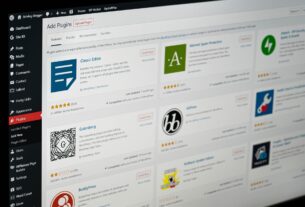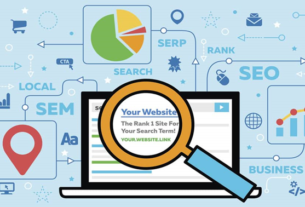SEO is one of the most confusing and intimidating aspects of website design. Where do you even begin with SEO? The good news is that there are some basic steps you can follow to get your site set up with the right foundation for ranking well in search results. With these 10 tips, even beginners can start their SEO journey and boost traffic right away!
1. Conduct Keyword Research
Keyword research is the first step to SEO. The purpose of keyword research is to find the right keywords for your website, which will help you rank for them on search engines. Keywords are words or phrases that people type into search engines like Google and Bing when looking for products or services like yours.
Keywords can be found in the title, description, and body of your content. When writing a blog post or creating an infographic, make sure you include your target keyword(s) within the first 100 words so that it appears on page one of Google’s results pages (SERPs).
2. Create a Keyword Strategy
To create your keyword strategy, start with a list of all of the keywords that you want to rank on Google and Bing. Then, organize them by their relevance to your business or website (e.g., “best SEO tips” versus “seo tutorial”). Lastly, prioritize which keywords should be at the top of your list based on how frequently those terms appear in search queries across both Google and Bing. You can then prioritize these terms over ones that have lower search volumes but offer more contextual relevancy to your business or website’s target audience.
3. Use the Right URL Structure for SEO
- Use short URLs. Short and memorable URLs can be very helpful in your SEO efforts.
- Use keywords in URLs. If you have a blog, use the keyword(s) you want to rank for in your URL structure so that people find it easily when they’re searching for related content on Google and other search engines.
- Separate words with hyphens or dashes, not underscores or periods (spaces). This will help you avoid problems with hyphenation when writing titles and descriptions that appear onsocial media platforms like Facebook, Twitter, Instagram and more!
- Don’t use numbers in urls — it’s better to use descriptive text instead like ‘product-name-here’ instead of something like “1” (which could mean anything). Also don’t start off each directory name with numbers as this makes it harder for Google to crawl through all of them so make sure everything starts off easy enough so bots can navigate without any issues whatsoever!
4. Title Tags and Meta Descriptions
You’ve written a great piece of content on your site, but how do you get people to actually read it?
The answer lies in writing compelling title tags and meta descriptions for each of your pages.
These are the first things that people see when they click on an organic search result in Google. They serve as a preview of what they can expect to find on the page, so they need to be interesting and enticing—but not too long! They should be between 70 and 80 characters in length, with 70 being preferred. (This is because longer titles are harder for users to scan quickly.)
5. Write Unique Content
The first step to improving your SEO is to create unique, well-researched content that adds value to your audience. The second step is to write in your own voice, using keywords and phrases that are relevant to the topic of your website. The third step is to use multiple sources for information about each topic you cover on your website.
6. Optimize your Images
Optimizing your images can help you have a great first impression with users, especially if they’re on mobile devices. It’s also important to optimize your image sizes so that they load quickly and look good on all screen sizes. Here are the best practices for optimizing images:
- Use alt tags for every image; alt tags tell search engines what the image is about or what it displays. For example, if you have a picture of your product, write something like “Product Image” or “Product Picture.”
- Make sure there aren’t any spelling mistakes in the alt tag because search engines will not be able to find your site if there are misspellings in the alt tag!
- Change up the file name of each image file as well (e.g., ‘image_4’ instead of ‘1’). This makes it easier for Google’s bots to crawl through different versions of each page on your website.
7. Optimize Your Content for RankBrain
Google’s RankBrain is a machine learning algorithm that helps the search engine analyze the meaning of what you are searching for. It uses this information to make sure you get an answer that is relevant to your question.
For example, if you search for “how to cook eggs,” Google will rank pages in its results that have information about how to cook eggs or contain recipes for cooking eggs.
These are just the basic rules of SEO. There are so many of them, and the truth is that they are constantly changing, so you have to stay up to date and follow the trends. If you can’t do it yourself, it’s best to hire a reputable SEO management to help you, so you don’t lose your nerves and money.
8. Use Videos to Increase Engagement on Your Site
Video is one of the most powerful ways to engage your audience. It’s simple: people love to see and hear things, and they like to be involved in the content they consume. You can directly improve your website’s SEO by adding videos that provide useful information or entertainment value.
Videoblogging also gives you an advantage over other sites in your industry by allowing you to address questions or concerns before they are asked. This helps establish yourself as a knowledgeable expert in the field—and increases traffic!
9. Add Internal Links
Internal links are the best way to link to other pages on your website. They help your visitors find the content they are looking for, and they also help Google know what your site is about. Use internal links to help your visitors find what they are looking for!
10. Create an SEO-Friendly Blog Design and Layout as You Build It
A good blog design can make all the difference when it comes to people actually reading your content. A poorly designed site isn’t just unattractive, it’s also less likely to be seen by search engines and users alike.
Use H1 tags for headlines and subheadings. This is one of those tips that’s technically not correct 100% of the time (for example, if you’re writing a list post), but generally speaking, it’s best practice to use H1 tags on each paragraph or section heading so that Google can recognize what information is most important on a page.
If you’re just starting out with SEO, don’t be intimidated. Once you’ve mastered the basics and built some great content that people are actually reading, you can move on to more advanced strategies. For example, if you want to rank higher in Google search results and drive more traffic from organic search (as opposed to paid ads), then it would be worth investing in some professional services from experts who know what they’re doing!




